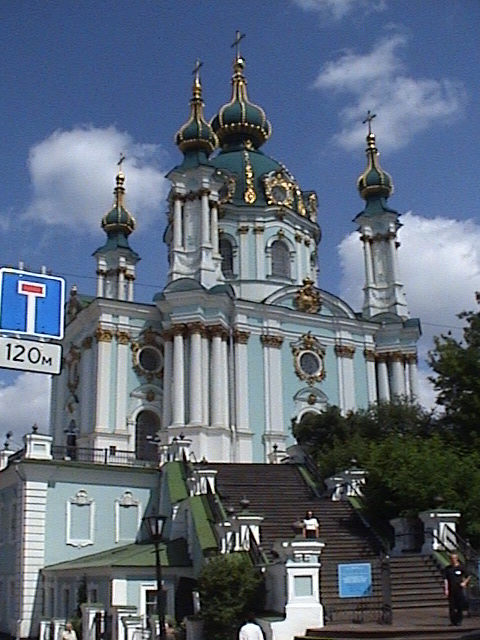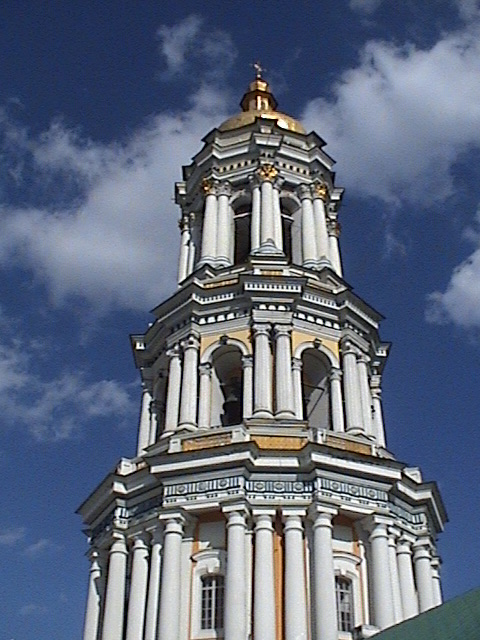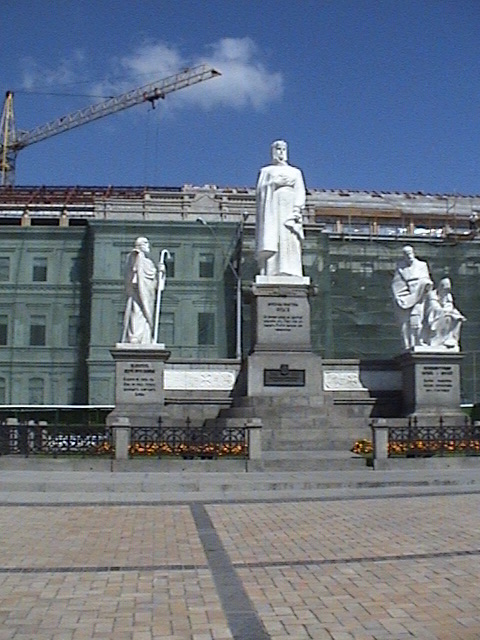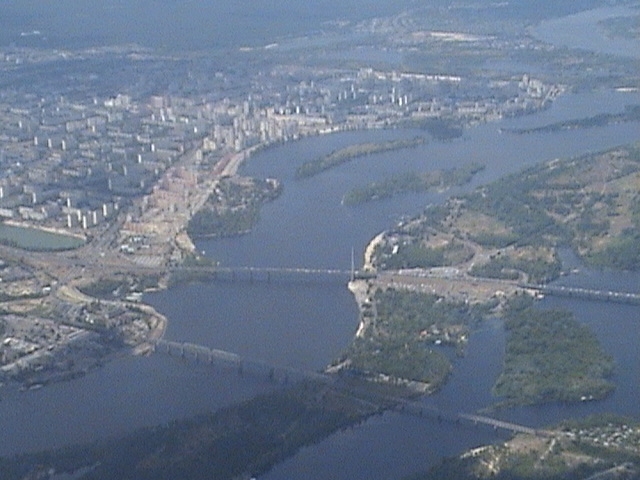|
|

SAINT
ANDREW'S CHURCH AT THE ANDREYEVASKY SPUSK |

GREAT
LAVRA BELL TOWER
KIEV-PECHERSK
LAVRA
One
of Europ's holy repositories of Orthodox relics |
|

SOFTYSKAYA
SQUARE ST.SOPHIA'S
CATHEDROL One
The Orthodox Church - Byzantium - the catherdral of Kyiv's
metropolitans was named after St. Sophia - the major holy place
of Constantinople |
|

THE
MONUMENT OF PRINCES OLGA:
In
front of the Real College a monument was erected depicting
Princess Olga flanked by Apostle Andrew and the St. Cyril and
Methodius.
|
|

A
VIEW BE
SEEN ABOUT FIVE MINUTES BEFORE LANDING AT "BORYSPOL",
THE KYIV INTERNATIONAL AIRPORT SITUATED AT THE EAST OF THE CITY
|
|
|
It
appears to be coexisting as two cities, back to back, or I
should say they stand side by side in mirror image; they are identical,
just the same but not quite. One is spelled Kyiv while the other is
spelled Kiev, and yet, both sound the same when they are
pronounced. The former represents the capital of a Republic State
named "Ukraine", founded only a decade ago as an
independent nation - first time in its history. The latter merely
signifies a
regional capital city, though the third largest of all among the union
known as "Soviet Union" - that, no longer exists, at least for
the time being.
Their
difference, if one can perceive such a difference, can be found by the
time the cities existed - the "past" and
"future" and only time will cure its disparate image with the
power of mother nature. To me, however, the contradiction I see
may be temporary. The city is in a transition, a transition that
will last for some time or, from this time on, the image will
become the city's characteristics.
There
once was a city called "the
mother city for all Eastern Slavic peoples." The state was
known as "Kyivan Rus", from which neighboring Russia and Belarus were
descended. Between the 9th and 11th centuries there founded a forest of Russian
Orthodox statues and cathedrals in the city - all of which would
represent the Slavic art and architectures. Then the repeated waves of
invasion by the neighboring states burned down and destroyed that city, leaving
the forest of the "the Russian Orthodox statues and cathedrals like
skeletons" in a grave yard of "Slavic art and
architecture."
Under communist urban planning,
the Bolsheviks
completely disregarded and ignored the landscaping of the city and consequently
destroyed the view of city. The devastation left by the purging of
anything bourgeois is as bad as the massive destruction of WWII by Nazi
Germany. The most beautiful sight of the city I found was the view
I saw from the airplane some
thousands of feet above. I do not think it was because the cracks of structures and
the fading paint
and tiles were not visible from that distance but because of the spectacular
panoramic view of the wide, blue River Dnipro, the green hills of dark
forest and the golden yellow domes of cathedrals.
New urban
planning has begun as hundreds of cranes stand and move creating
another forest of construction machineries. I feel there will be
renovation in time. However, the view is likely to remain the same
since much of the renovation is on the interiors of existing structures
rather than demolishing the old and constructing new buildings.
The Soviet-built residential sections are still intact where people's
lives are restricted within its old environment. Their effort to develop
electronic and computerized technology are impressive and are
contributing to build their economy. Yet the public utilities and
facilities including transportation, such as the subway, seem to rely
upon the old structures. Therefore it may take some time before the
public benefits from what we perceive as givens of an urban city life
- safety, security and sanitation.
Norimi
and Heidi
|
|